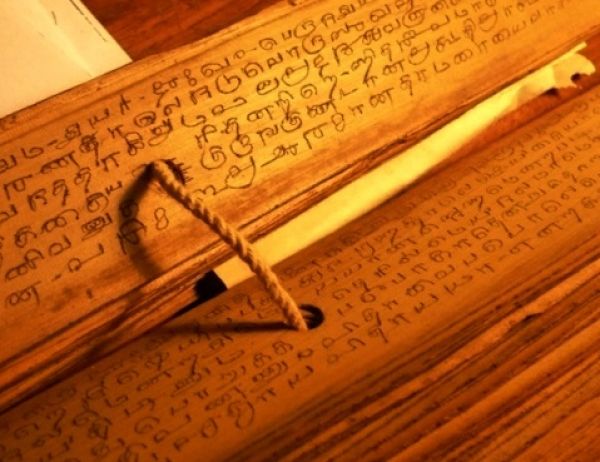
Ancient treasure in Palm leaves
Share
Many of you might not be aware that palm trees can last for more than a century, and their leaves or fronds serve as a good medium for writing. These palm leaves can last for several centuries when stored properly.
The palmyrah palm was once prominent in our country, especially in the southern region, though their number is dwindling, thanks to rampant urbanisation. The leaves and Other parts of the tree are also used to make fans, mats, umbrellas, brushes and brooms.
To use as a writing surface, the leaves are first cooked and dried. The writer then uses a stylus to inscribe delicate lettering. Palm leaf manuscripts are required to be preserved properly as they can be eaten away by white ants and small insects. A large number of manuscripts containing ancient Sanskrit works and held at temples and public places as treasures, were known to be destroyed during the times of Mughal invasion. Some rare manuscripts are still available in our ancient temples. One such rich repository of ancient manuscripts is the Sringeri Peetham, where about 5000 manuscripts including palm leaf, paper as well as cloth manuscripts are stored in the centuries old Saraswati Bhandara library of the Mutt. The manuscripts contain works across the gamut of Sanskrit literature pertaining to various darshans, puranas and Vedangas, including many works of Adi Sankara.
Apart from carefully preserving the palm leaves manuscripts with the aid of modern technology, Sringeri Peetham has taken the initiative of publishing the rare texts in Vedas and Sastras, with the Jagadguru Sri Bharati Tirtha Mahasannidhanam personally editing and overseeing the publication. About 25 such publications have been released, including Vaktavya Kashika, a millennium- old commentary on Padmapadacharya's Panchapadika composed by Sri Uttamajna Yati, a disciple of the 5th Acharya of Sringeri Peetham, nanottamacharya (910-954 AD). Apart from palm leaves, cloth manuscripts called 'kadatas' contain a wealth of information on the history of Sringeri Peetham. The original inscriptions and other records throw light on political, administrative, religious, economic and social conditions prevailing in the region during the 14th to 19th century.
